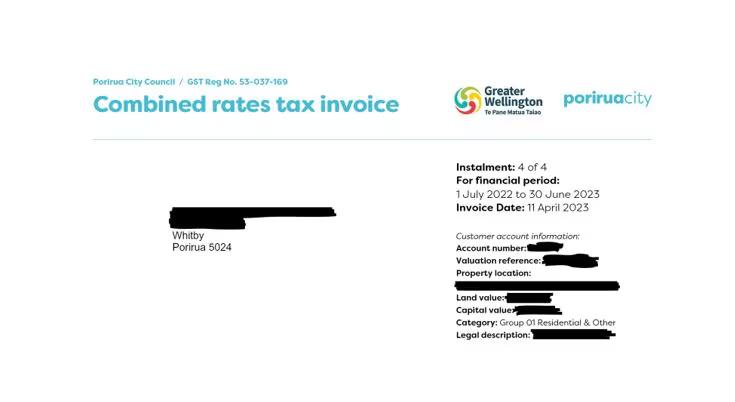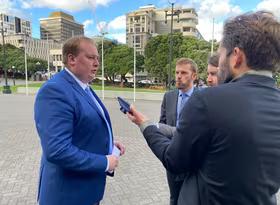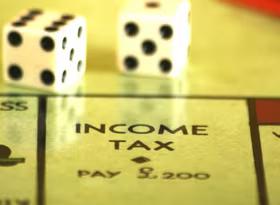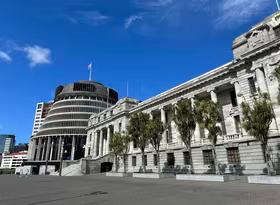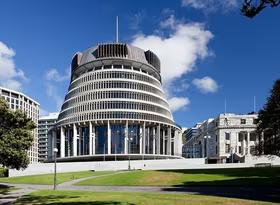Rising local government costs are clear to see, with expectations that rates rises in 2024 will be the largest since local council reforms in 1989, to pay for delivering community services at higher costs.
More funding is needed at a local government level to afford the expansive and increasingly expensive services that communities require. One such funding avenue is returning the GST charged on rates back to local councils. Our analysis shows that this approach could return $1.1b to local councils to support investments and potentially lower the rates burden.
An average 15% rates rise expected across NZ
Recent Infometrics analysis for Local Government New Zealand has shown that local councils continue to face substantial cost pressures, including large increases in the cost of delivering core infrastructure, higher labour costs, higher operating costs, and higher interest costs. These considerable cost increases have to be paid for somehow, with local councils across the country intending to raise rates by around 15% on average in 2024.
As Chart 1 shows, rates in 2023 rose 9.8%pa on average across New Zealand, the largest increase since a 10.8%pa increase at the end of 2003. The expected 15% increase in 2024 would be the largest since a 17.5%pa increase in 1990, as the 1989/90 local government reforms occurred.
Over the 20 years to June 2024, local government rates have increased by around 5.5%pa.
Returning GST from rates would contribute $1.1b
Local government rates are effectively a collective group charge for a range of goods and services that councils provide to an area, rather than each individual person or household paying separately for those goods and services. But as councils are providing goods and services, rates are subject to GST (and rightfully so).
This rate of GST – an additional 15% of the value of the base local government rate collected – does not go to local councils but instead to central government, as with all GST.
Infometrics analysis suggests that the value of GST collected on local government rates in 2022 (the latest detailed data available) would be worth around $1.1b. To put this figure in context, that $1.1b in additional revenue in 2022 would have been worth 9.2% of total council operating income, or 8.6% of operating expenses.
Chart 2 outlines the expected additional revenue for each local council across New Zealand if GST was returned to local government, based on the most recent figures available. It shows that additional revenue would range from $1.2m for Kaikōura (or $102k for outlier Chatham Islands) through to $317m for Auckland.
The additional revenue if GST on rates was returned to local councils is more significant for some councils than others. Some have larger non-rates revenue,1 making the GST potential earning a smaller proportional boost.
As a share of operating income, GST returned would account for 12.2% of operating income for Rotorua at the top end of the scale. Thames-Coromandel, Western Bay of Plenty, Kāpiti Coast, and Taupō are the other four districts making up the top five for the highest share of operating income.
At the other end of the scale, the Chatham Islands would get only 1.2% more of current operating income with returned GST, due to the way the Chatham Islands Council is funded. Hurunui District has the next lowest share at 6.3%, given higher non-rates income from other operations helping fund activities. Buller, Tasman, and Marlborough round out the top five with the lowest additional operating income share.
The map above in Chart 2 shows all local territorial and unitary authorities, but not non-unitary regional authorities. The appendix at the end of this analysis contains the full list of local, regional, and unitary authorities.
Returning GST would cost 4.2% of GST, 0.9% of total government revenue
The estimated $1.1b in GST collected from local government rates in 2022 was worth around 4.2% of the net $26.1b in GST collected in 2022, according to the government’s financial statements. Overall, the $1.1b was worth 0.9% of total sovereign revenue collected (including all taxes, levies, etc).
In 2022, the government ran an OBEGAL deficit of $9.7b. Simplistically, returning GST on rates to local councils would have pushed the deficit up by around 14%, to around $10.8b. Although the GST collected on rates isn’t a huge part of total collected tax, it would make large changes to the balance of central government finances. This difficult tightrope walk for the government balancing its finances demonstrates the difficulty in agreeing to shift this revenue from central to local government.
Note
Rates data sourced from Stats NZ is GST-exclusive, as confirmed to Infometrics in correspondence with Stats NZ. The now-defunct localcouncils.govt.nz site previously run by DIA also notes that the figures used were exclusive of GST.
Appendix
2 Examples of non-rates revenue include entrance fees, building consent fees, and the like.
